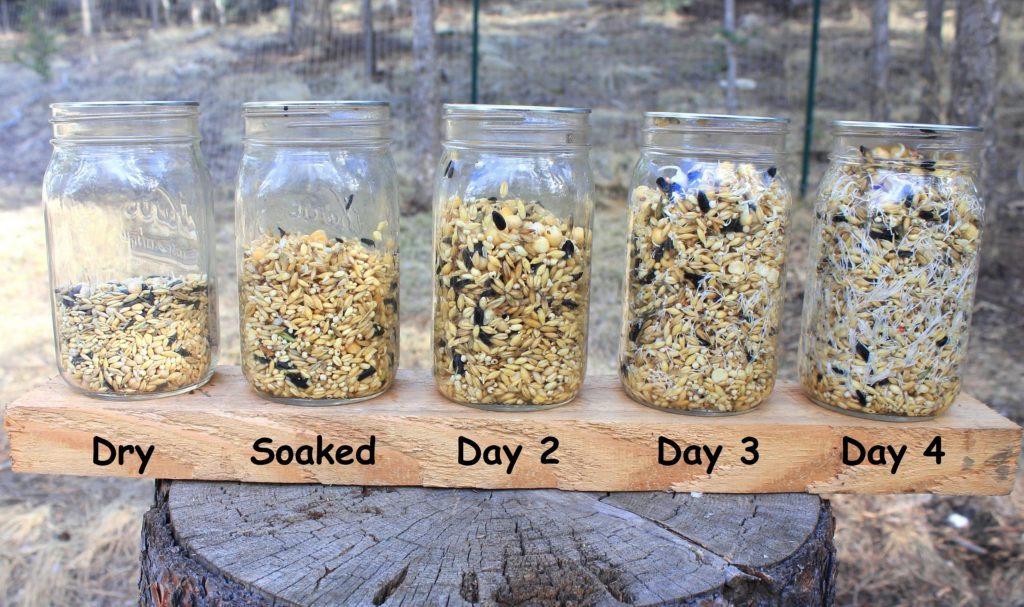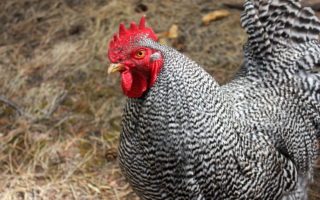Sprouting your animal feed is the best way to get the most for your money, as well as provide your animals with optimal nutrition. By sprouting seeds, the overall vitamins, minerals, and protein content increases up to 20 times! It also makes it more digestible and bioavailable for your animals.
**Finally, Smart Grow Systems – Worry Free Growing (CLICK HERE)**
 Sprouting: Sprouts are grains that are 2-5 days old and can be sprouted in jars or any container of your choice.
Sprouting: Sprouts are grains that are 2-5 days old and can be sprouted in jars or any container of your choice.
Fodder: Fodder takes sprouts a step further. I like to start out with soaking and sprouting your grains in jars and container for the first 2-3 days before pouring and spreading them out into a seed tray to finish the process. Once you’ve got a mat of roots and fodder it’s ready to feed to your animals.
Which To Feed My Animals? You can feed either option to your animals (chickens, goats, sheep, rabbits, cows, horses). However sprouts may be more suitable for chickens as the fodder can potentially impact their crop. I haven’t personally had a problem with this but it’s worth noting. Fodder is a better option for larger livestock and it produces more feed.
What To Sprout? A variety of grains can be sprouted: peas, barley, wheat, oats, corn, millet, sunflower seeds, etc. You can choose to sprout one or a few of these but the more variety the better. Just know that different grains will germinate at different rates.
Step By Step
Step 1: Create Your Seed Mix (source organic fresh ingredients). Get containers ready. Whether you’re doing sprouts or fodder, the number of containers/trays you need depends on how many days your growing for before you serve it. If you’re sprouting and feeding after 4 days then you’ll need 4 containers so you can start a new jar each day and have a continual supply.
Step 2: Soak your seeds 2-10 hours in your chosen containers (I like 1 quart mason jars). Cool water is best to avoid mold. Make sure containers a sterile and clean. Oversoaking can drown your seeds and cause them to rot.
Step 3: Rinse and drain 2-3 times per day. I find 2 rinses to be sufficient, but if you are in a warmer climate and begin to notice mold then you’ll want to add a third rinsing. Make sure to drain ALL the water from the containers so that none of the seeds at the bottom drown and go stagnant.
Step 4: On day 4-5 your can feed the sprouts to your animals. Or, if doing fodder it should be ready to feed by day 7 give or take a day.
Step 5: Clean and sterilize containers and trays and repeat the process. Not cleaning may result in mold or a fermented like smell.

Germination Rates Of Different Grains
For the most part your grains should begin to sprout at 2-3 days (wheat, barley, oats, corn, peas, sorghum). Grains like sunflower seeds may take a tad longer at 4-5 days. So in a big mix you’ll have some grains that are further along than others but for us it’s just fine. You can certainly pick one or two grains to focus on that will germinate at the same time.
**FINALLY, A Smart Coop For Chickens (CLICK HERE)**
Tips & Trouble Shooting
 Temperature: The ideal temperature is roughly 60-70° degrees. Colder temperatures (but not too cold) will result in slower sprouting, whereas warmer temperatures may germinate a little quicker but is also going to put you at a higher risk of molding.
Temperature: The ideal temperature is roughly 60-70° degrees. Colder temperatures (but not too cold) will result in slower sprouting, whereas warmer temperatures may germinate a little quicker but is also going to put you at a higher risk of molding.
Poor Germination: Consider whether or not your seed is too old or if you soaked your grain for too long.
Mold: The biggest cause of mold is lack of airflow, especially for fodder. Consider a fan to help with air flow. Other causes can be dirty containers, poor drainage, over soaking seeds, poor germination, environment too warm, not rinsing enough, or humidity.
Vinegar Smell: For many of the same reasons for mold, it can cause a vinegar/fermented smell. I’ve found this the most prevalent if I don’t clean out my containers after each batch of sprouts.
Containers: You can sprout or do fodder in any chosen container. The important part is drainage and airflow.
Good Luck!











